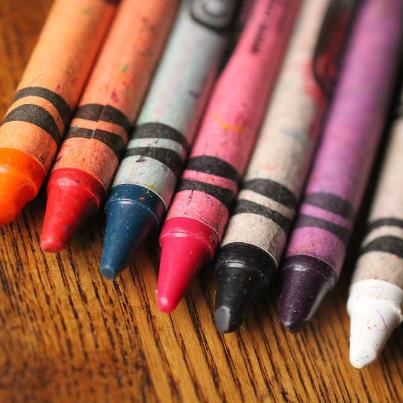 |
| Photo courtesy of Adrienne @ Whole New Mom |
Reference Number 001191621A.
Dear LXXXX,
Crayola takes the safety of our products very seriously and we were equally concerned by the report you saw about mercury in crayons. We subsequently had two independent, non-governmental labs test these same crayons using proper chemical testing protocols. Both test results reported no mercury in Crayola(R) Crayons.
In addition, we also worked with the manufacturer of the XRF testing equipment used by the author of the post you referenced to determine how and why her test showed the presence of mercury. They determined that the tests on our crayons showed a false positive for mercury, based on an interference created by another constituent of the crayons. In short - the information in the post is inaccurate. Based on these test results, we requested that the post be removed and a correction printed in order to prevent the further spread of inaccurate information and the unnecessary confusion of others.
So in defense of Crayola I printed their response and you can read the rest of the post with this information in mind....
_________________________________________________________________________
Came across a post on Facebook and it could effect many people trying to keep heavy metals away from their children. The non-profit group Lead Safe America trying to prevent children from lead exposure in their home. Through a fluke accident Tamara Rubin was using a Niton XRF from Thermo Fisher Scientific to look for heavy metals. Her son happen to have his Crayola crayons with him so she thought she would examine them.
According to hear readings 20 out of the 24 pack of crayons tested fine. Four of the crayons showed high levels of mercury and low level of cadmium. These were Indigo, Blue Violet, Red Violet and Violet. Ms. Rubin was able to contact Crayola and they said the crayons were extensively tested and shown to be safe. If you want to be on the safe side and you know you have a child that like to eat or put crayons in their mouth the best bet is to just remove these crayons from the box. Better safe than sorry!
(If you are having trouble reading the text press CTRL and the + or - symbol to enlarge or shrink font size.)



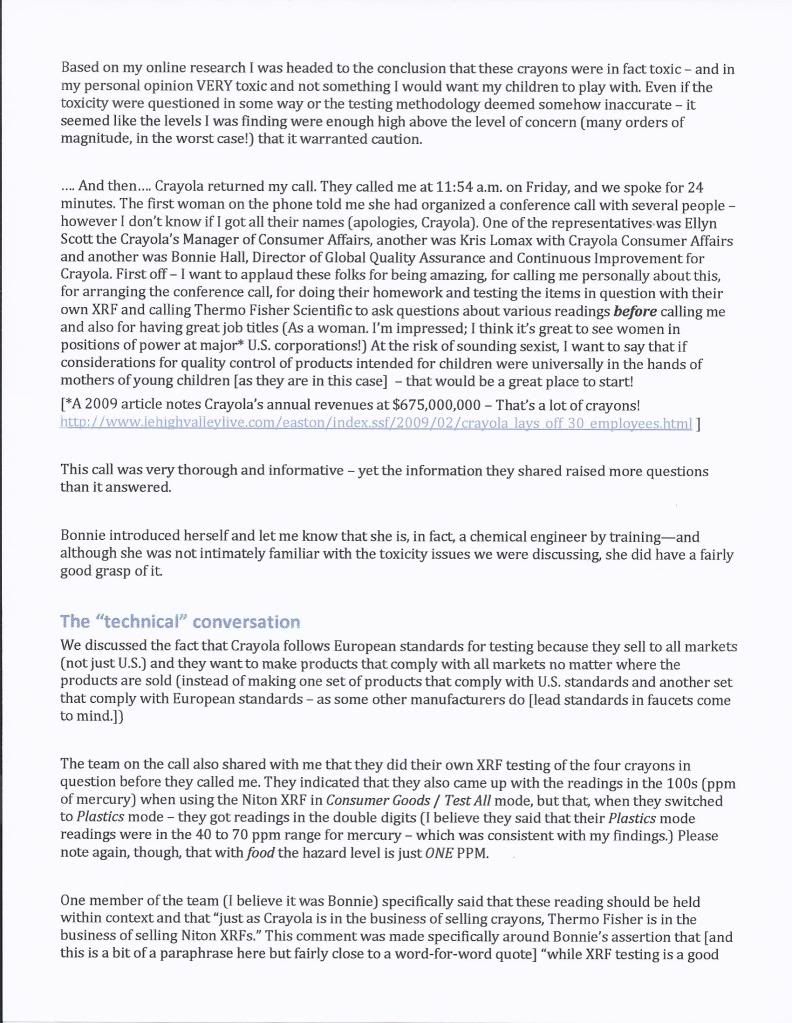
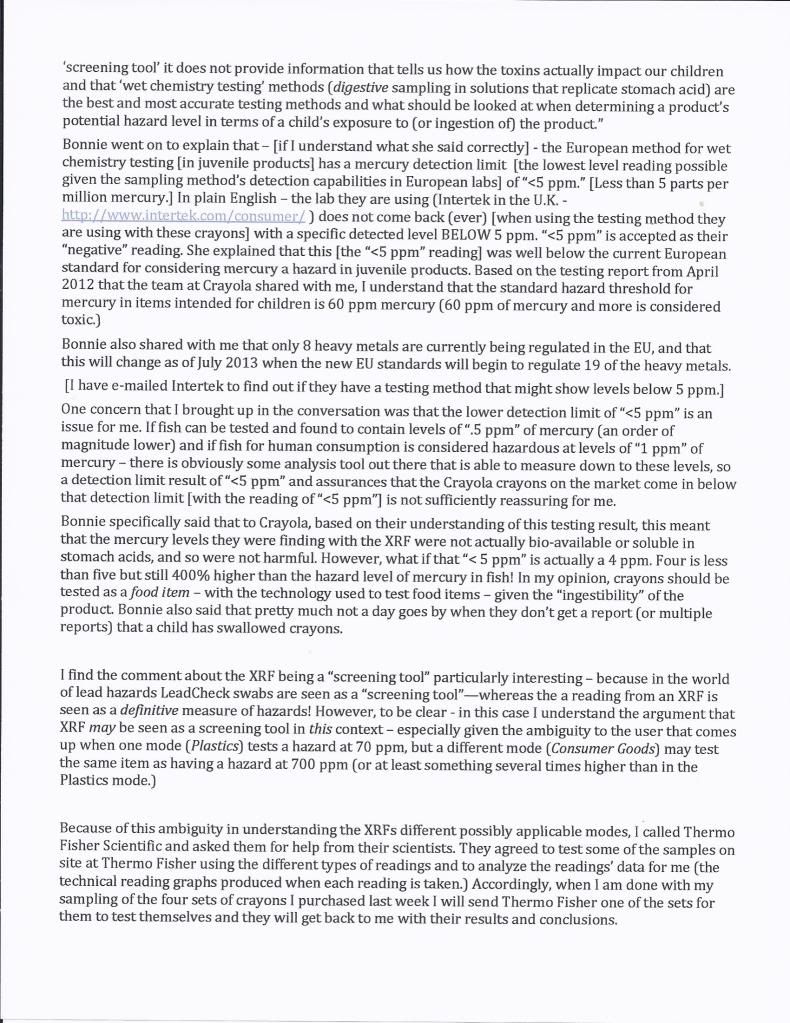
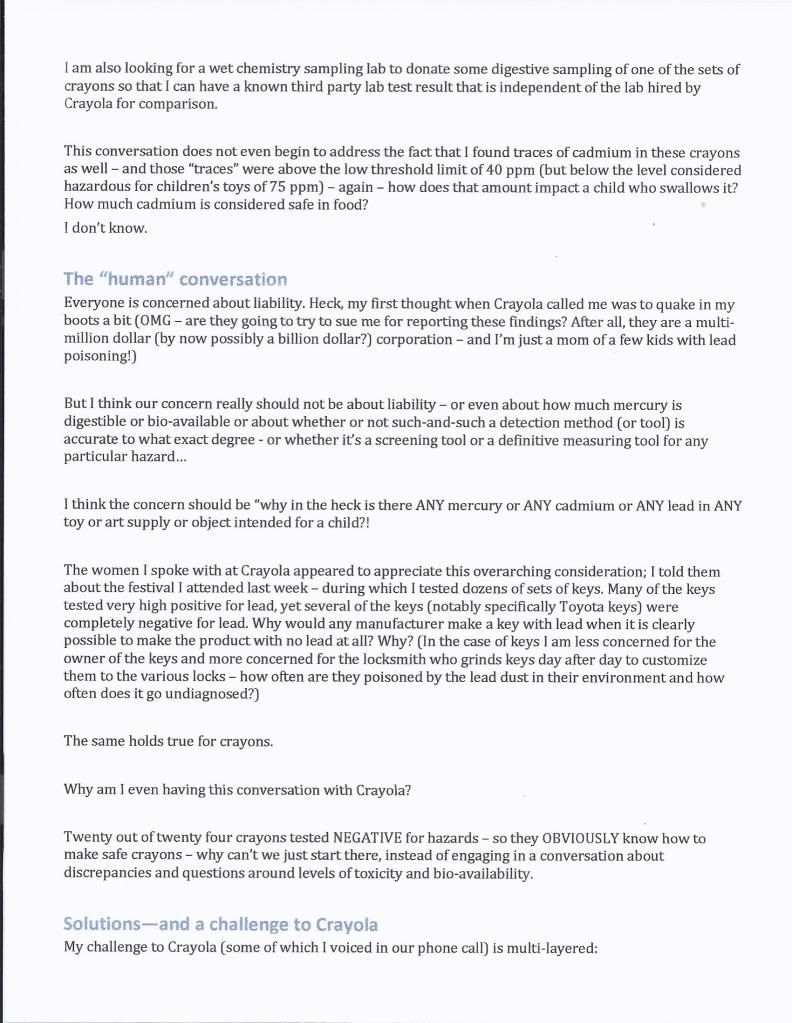
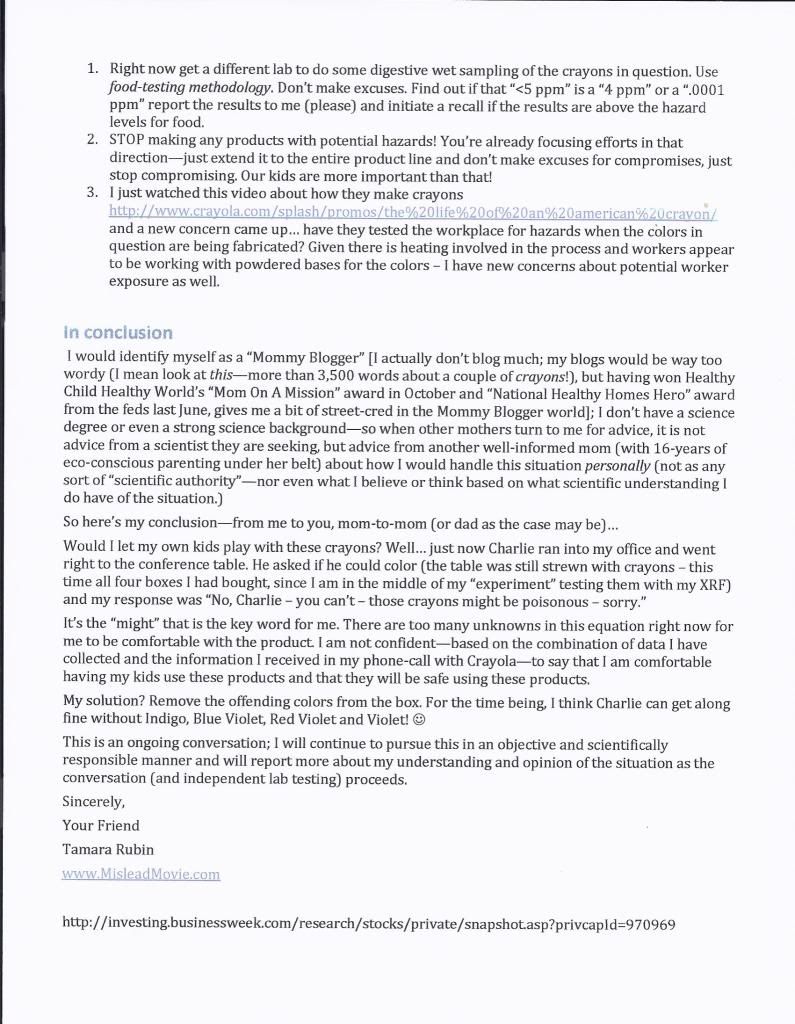
Do you know where the original article went to? A bunch of the blog posts on the same issue were deleted too
ReplyDeleteIf you click on Ms. Rubin's name it takes you to the article I saw and read from Facebook.
DeleteI just checked back today and the article has disappeared. I will be posting the article again by tomorrow. The link should be active by then. Thanks for your patience.
ReplyDeleteMy mother used to work at Fisher. Very interesting. Thanks for sharing.
ReplyDeleteJust shared this on my Facebook fan page. Whole New Mom is my blog name - I am the one whose mother used to work at Fisher. Thank you so much for sharing. I am sure my readers are going to find this very interesting.
ReplyDeleteThank you Adrienne and I am glad you found my post useful!
Deletei just want to inform you the reason why other pages have been removing this is BECAUSE ITS FALSE INFORMATION!!! i just emailed crayola about this and this is what was emailed to me :
ReplyDeleteBelow is our response as captured in our system as Reference Number 001191621A.
Dear Lady J,
Crayola takes the safety of our products very seriously and we were equally concerned by the report you saw about mercury in crayons. We subsequently had two independent, non-governmental labs test these same crayons using proper chemical testing protocols. Both test results reported no mercury in Crayola(R) Crayons.
In addition, we also worked with the manufacturer of the XRF testing equipment used by the author of the post you referenced to determine how and why her test showed the presence of mercury. They determined that the tests on our crayons showed a false positive for mercury, based on an interference created by another constituent of the crayons. In short - the information in the post is inaccurate. Based on these test results, we requested that the post be removed and a correction printed in order to prevent the further spread of inaccurate information and the unnecessary confusion of others.
Thanks you for the information and I will amend the post to include your information.
DeleteThanks!
What is the other constituent of the crayon that causes a "false positive?"
ReplyDelete